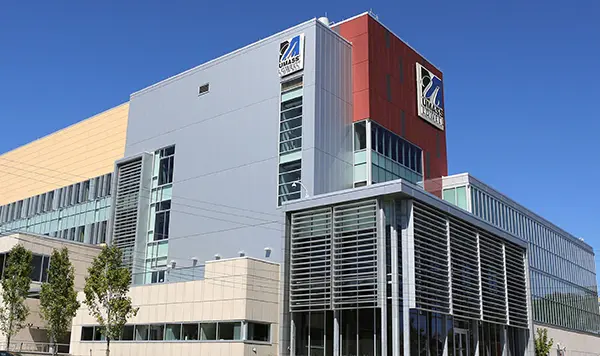Diagnostic Tool Could be Used at Home or in Other Settings

06/09/2020
Contacts for media: Nancy Cicco, 978-934-4944, Nancy_Cicco@uml.edu and Christine Gillette, 978-758-4664 or Christine_Gillette@uml.edu
LOWELL, Mass. – A team of UMass Lowell researchers is developing a new rapid test to diagnose COVID-19 that could be used at home by consumers or in health care settings.
The researchers – Gulden Camci-Unal, assistant professor of chemical engineering, and Ph.D. candidate Darlin Lantigua of Lawrence – are on their way to inventing a new diagnostic tool that would work like a home pregnancy test.
They came up with the idea for a rapid COVID-19 test as the spread of the pandemic in the U.S. began growing in February and March and they started thinking about how they could help address the problem. Camci-Unal got the university’s approval to pursue the project during the state’s limit on activities because the research is related to COVID-19. The team went to work, maintaining safety protocols including limiting to one person in the lab and using tools like Skype to collaborate.
“We really think this test is going to be very impactful and help people be diagnosed early and treated properly,” said Camci-Unal.
The test is capable of detecting COVID-19 in as little as five minutes, compared to existing methods of diagnosis, which can take hours or days to deliver results and must be performed and evaluated by a health care professional, she said.
Because of the simplicity of the test, which uses bodily fluids and biosensors, even an untrained person can easily and effectively perform the test and read the results, according to Camci-Unal, who added that it could also be used in a clinical setting or be administered by first responders.
“We believe that the speed, cost, portability and potential scalability of our point-of-care test will increase the extent to which the diagnosis of this condition is accessible globally,” Lantigua said.
Biosensors, which are at the root of the new diagnostic tool, are already an area of expertise for Camci-Unal, whose research at UMass Lowell includes work using such sensors for disease detection and other medical conditions and substances like heavy metals.
“We have a lot of experience in detecting viral and bacterial diseases,” Camci-Unal said of the team in her lab, which includes students like Lantigua who are working on degrees in various fields of study.
Lantigua, who is pursuing his doctoral degree in biomedical engineering and biotechnology, already has master’s and bachelor’s degrees from UMass Lowell and is also part of the research team working with Camci-Unal on efforts to use materials found in eggshells to repair bones.
The test, which is still in the development stage, could be ready for use in months, depending on factors like approval by the Food and Drug Administration, said Camci-Unal, adding that her team is looking for an industry partner to help move the test from the lab to the market.
UMass Lowell is a national research university located on a high-energy campus in the heart of a global community. The university offers its more than 18,000 students bachelor’s, master’s and doctoral degrees in business, education, engineering, fine arts, health, humanities, sciences and social sciences. UMass Lowell delivers high-quality educational programs, vigorous hands-on learning and personal attention from leading faculty and staff, all of which prepare graduates to be leaders in their communities and around the globe. www.uml.edu
